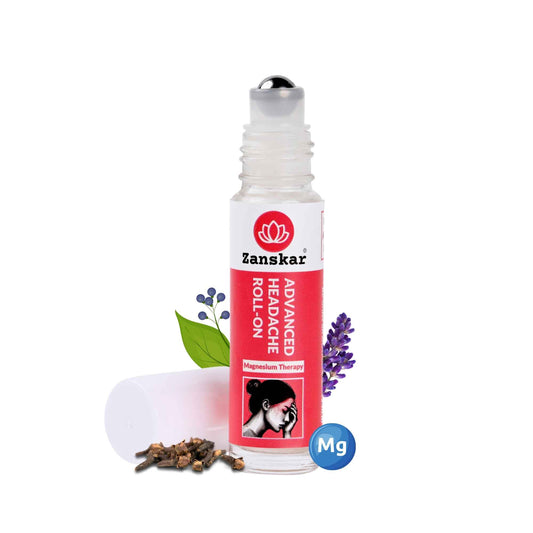
What is Trigeminal Neuralgia, also called as the "Suicide Pain Disease"?

Of all of the pain conditions that chronic pain patients experience, there are arguably none worse than the pain of trigeminal neuralgia. Often called the “suicide disease” because of the intense pain, high rates of suicidal ideation, and links to higher rates of depression, trigeminal neuralgia is a rare, benign nerve disorder that causes pain that spreads over the face and down the neck, triggered by even the slightest breath of wind across the face.
What is trigeminal neuralgia?
Trigeminal neuralgia is the general term for pain caused by the trigeminal nerve. It is also called TN pain.
The trigeminal nerve begins just behind the ear on either side of the face and spreads across the cheeks, jaw, lips, and nose. There are three branches of this nerve – the upper, medial, and lower branches. Where the pain is located depends largely on which branch is affected. Rarely, sufferers experience pain on both sides of the face (this is called bilateral trigeminal neuralgia).
Trigeminal neuralgia may be diagnosed as migraine, which affects <1% of people in India.
It is reported that 50,000 people are diagnosed with trigeminal neuralgia every year in India. While the disorder can occur at any age, it is most common in people over the age of 50. TN is twice as more common in women than men. It's also more common in rural areas than urban areas.
Trigeminal neuralgia symptoms
According to some people, the pain of this condition is the worst pain that can be felt, worse even than limb amputation or childbirth. The Facial Pain Association reports that:
“People with TN avoid social contact and daily activities such as eating and talking because they fear an attack. Many have been known to lose their jobs because of the debilitating nature of the pain. Marriages have dissolved due to the difficulty of providing care and support to persons with TN.”
Trigeminal neuralgia symptoms vary and can include:
- T1 or TN1 pain: Short, sporadic, and extreme pain that may only last a few seconds or a few minutes, and that may also include a burning feeling
- T2 or TN2 pain: Constant pain that is similar to T1 pain but is ongoing with no relief
- Sensitivity to light and sound
- Nausea and vomiting
Trigeminal neuralgia symptoms may disappear for a period of time and then reappear. As the condition progresses, periods of remission may shorten, and medication may become less effective.
What are the causes of trigeminal neuralgia?
The main cause of this condition is damage along the trigeminal nerve. This could be caused by a facial injury or deep in the brain at the trigeminal nucleus. Other conditions that can damage the trigeminal nerve include:
- Multiple sclerosis
- Scleroderma
- Herpes zoster (shingles)
- Lupus
Some researchers hypothesize that deterioration of the myelin sheath surrounding the nerves may also cause trigeminal neuralgia. If there are no other trigeminal neuralgia causes that can be identified, this may be the most likely explanation.
How is trigeminal neuralgia diagnosed?
As with many similar conditions, much of the diagnosis of trigeminal neuralgia is based on eliminating all other conditions first. MedlinePlus reports that:
“There is no single test to diagnose TN. It can be hard to diagnose, since many other conditions can cause facial pain.”
Doctors will conduct a thorough physical and neurological exam. Patient history will include location and incidence of symptoms and any potential underlying conditions that may have caused the condition. Post-herpetic neuralgia (nerve pain caused by shingles), cluster headaches, and temporomandibular joint disorder (TMJ) have similar symptoms and patterns and will be eliminated as possibilities first.
Magnetic resonance imaging is used to look for a tumor compressing the trigeminal nerve. Other diagnostic tools include a short course of anti-seizure medication or tricyclic antidepressants, a positive response to which may indicate trigeminal neuralgia.
Overlapping symptoms of disorders that cause facial pain make designing treatment challenging, so it is imperative that a proper cause of pain be identified first.
Treatment
Pain management of this condition is imperative, as pain can be debilitating and deadly. There are many different approaches to trigeminal neuralgia treatment.
1. Anticonvulsant medication
These medications prevent the nerves from firing and are most effective for TN1.
2. Tricyclic antidepressants
Anti-depressants are often successful at managing the pain of this condition, although how they work is not clear.
Surgery Options
There are many different surgical options available to trigeminal neuralgia patients. The success of these depends on the overall health of the patient and any underlying conditions.
- Balloon compression: Balloon compression injures the nerves in the face that can pick up light touch. This makes a patient less likely to feel pain. Results from this procedure can last up to two years.
- Glycerol injection: This injection is delivered directly into the trigeminal nerve center in the brain, damaging the protective insulation of the trigeminal nerve fibers. This procedure can be repeated every one or two years as needed.
- Radiofrequency ablation: This procedure damages the nerve that is causing the pain using an electrical signal. Half of people who have this procedure experience pain again in three or four years.
- Stereotactic radiosurgery: This procedure uses a laser to damage the area where the trigeminal nerve leaves the brain. This causes a lesion to form, blocking pain signals.
- Neurectomy: This procedure cuts superficial branches of the trigeminal nerve so that they cannot transmit pain to the face. Over time these branches may heal causing pain to return.
Complementary approaches
Complementary treatment approaches to this condition are usually focused on treating chronic pain and other symptoms. They may include meditation, acupuncture, and biofeedback.
Learn More About Zanskar Health
If you have joint or muscle pain that makes it hard to move, Zanskar offers the most advanced full stack pain relief solutions for you.
Now available to purchase, Zanskar® Advanced Pain Care Products have a unique formulation of natural bioactive ingredients and provide lasting relief from muscle and joint discomfort that you can feel good about. Get your fix before stocks run out - buy now.
You can also gain access to therapeutic exercises and stretches for your condition by downloading the Zanskar Health physiotherapy mobile app. Additionally, you’ll have a personal care team to guide, support, and tailor our program to you, including behavioral and nutritional coaching.
Download our mobile app here 👉 download and track your exercise streak.
Medical Review: This article is written by Dr Nishtha Mittal (Senior Health Content Editor at Zanskar Health) and has been medically reviewed by the medical team at Zanskar Health. This article and its contents are provided for educational and informational purposes only and do not constitute medical advice or professional services specific to you or your medical condition.







